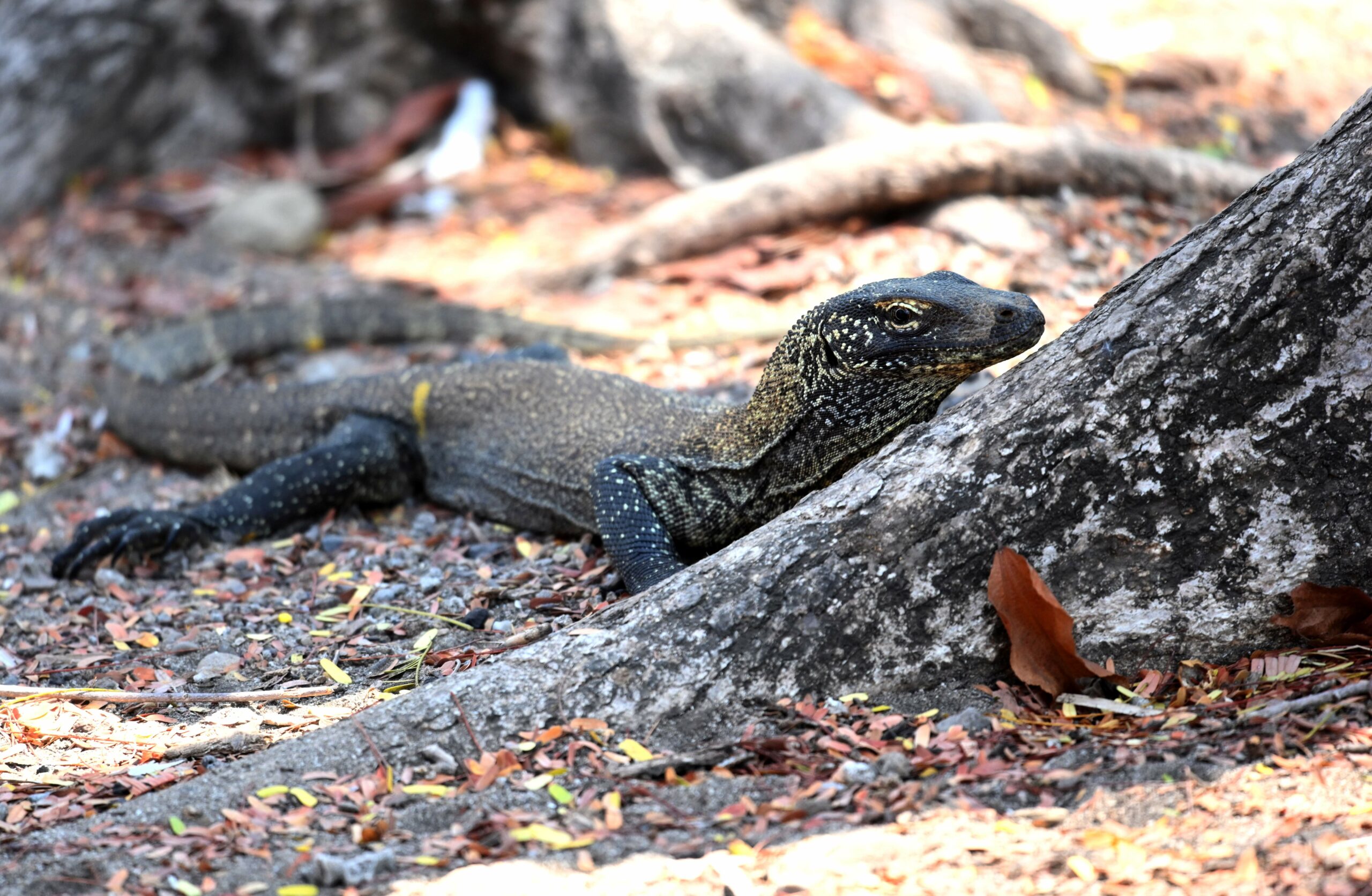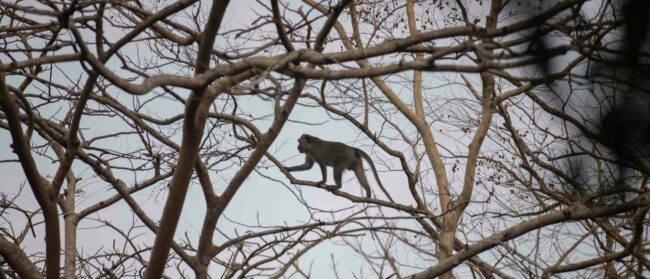Bryan Fry doesn’t subscribe to scientific fairy tales.
His research with a group of fellow scientists replaced a long-held but misguided belief about Indonesia’s national animal, the Komodo dragon.
The associate professor in the School of Biological Sciences at the University of Queensland in Australia helped determine the dragons do not carry a deadly broth of active bacteria in their powerful bite, which researchers previously believed had enabled them to incapacitate prey including large targets such as water buffalo.
“There is a simple phrase in science that extraordinary claims require extraordinary evidence,” Fry said in an email. “Bacteria-as-a-weapon would have been an unprecedented form of predation strategy. Yet it was instantly accepted simply because it was enchanting, just like most fairy tales.”
Komodo dragons, the planet’s largest lizard species, reside within Komodo National Park, which is a UNESCO World Heritage Site including Komodo, Rinca, Padar, Gili Motang and Nusa Kode islands, and outside the park on Flores and two smaller islands.
The Republic of Indonesia established the park in 1980 to protect the species, which is frequently cited as the country’s national animal due to its singular geographic connection. While it is unclear if the dragon is officially the national animal, the website of the Indonesian embassy in the U.S. explains, “Tourists come to see the rich diversity of plants and wildlife – some, like the giant Komodo dragon and the Javan rhinoceros, exist nowhere else.”
The fearsome, powerful hunters move on four legs close to the ground and have a serrated bite that can rip flesh, but Fry said the idea they kill prey with a toxic oral mixture is a long-standing fallacy.
“We showed that the bacteria loads in the mouth are not more than any other carnivore, and actually less than some others like lions,” Fry said, adding that the bacteria are transients, “simply reflective of whatever was floating around the last water it drank or covering the last thing it ate.”
The notion of a Komodo mouth bacteria originated with American ecologist Walter Auffenberg, whom Fry said spent more than a year researching in the islands that now comprise the animal’s home in Komodo National Park. Auffenberg’s resulting 1981 book made the bacteria claim without substantiating data, Fry said.
“The story gained traction until the bacteria theory was assumed to be fact. Being repeated over and over in nature documentaries, often using staged footage,” Fry said.
Komodos evolved in Australia, not Indonesia, and later radiated to Flores and nearby islands. In their adopted habitat, the carnivores have three primary choices of prey among local feral mammals: pigs, deer and water buffalo.
Attacks on pigs and deer, which are naturally between 40 and 50 kilograms (88 and 110 pounds), have a high success rate, with many bleeding out within hours, while at times subjected to repeated attacks. Yet ambushing water buffalo offers a “dramatic contrast,” with the large animals often escaping with deep leg wounds, Fry said.
Wounded water buffalo often stand in watering holes tainted by animal waste, which Fry said creates “perfect scenario” for infections to flourish in the bites from Komodo attacks.
He explained the samples used by previous researchers to determine Komodos carried a fatal bacteria did not take into account that the animals drank from the same watering holes filled with faeces, and therefore pathogens, where their prey sought refuge after attacks. Simply put, bacteria in the dirty water found its way into the mouths of Komodos and the wounds of the water buffaloes, leading to an incorrect assumption that the dragons were the source of the bacteria.
The bacteria theory “has been a man-made, artificial scenario all along that has nothing to do with the evolution of the predatory ecology of Komodos,” he added.

While removing the bacteria myth, Fry’s research paper with seven colleagues from around the globe, which was based on work beginning in 2008 and published in 2013 by the Journal of Zoo and Wildlife Medicine, also established a new understanding of the predator’s hunting tools: like some snakes, Komodo bites disperse venom aiding their kills.
“Auffenberg’s book did not present any evidence for bacteria, but what he did see was consistent with fast-acting venom,” Fry said. “So we had a hunch that he was wrong about bacteria, but had recorded the first evidence of venom without realising it. So we were testing two hypotheses: that bacteria were not being used as a weapon, but venom actually was.”
Achmad Ariefiandy, a senior researcher and project manager with the Komodo Survival Program, said education and community awareness are important in changing negative perceptions about Komodo dragons. Like Fry, he was eager to dispel a false rumour about the species.
“Komodo dragons do cannibalism, larger dragons occasionally kill and eat smaller dragons, to naturally maintain their population. It is quite normal as they are top predators and live on small islands with limited resources,” Ariefiandy said.
“However, I don’t believe any statement that says the mother preys upon its offspring,” he said. “There is so much effort for the female to reproduce, so it completely doesn’t make any sense if they sacrifice so much just to eat their babies.”
The International Union of Conservation of Nature (IUCN) has established a scale tracking threatened species, ranking them between “least concern” and “extinct.” The Komodo now sits at “endangered,” three spots from extinction. The organisation’s Red List tracker of threatened species identified human activity, including man-made elements of climate change, among the primary causes for the Komodo’s precarious status.
Human encroachment is the most immediate threat to Komodo conservation, Fry said.
“On Rinca Island, the locals are hunting the deer that the Komodos eat, thereby reducing their food supply,” he said. “Luckily the local population are Muslim and thus don’t eat the pigs also on the islands, so at least that food supply is not threatened.”
The dragons are vulnerable to climate change and sea level rise because their preferred habitat is lowland forest in coastal areas. Komodos living within the national park are well protected, but some are outside the park boundaries living near people, Ariefiandy said.
“That makes human-Komodo conflicts inevitable, due to them having to compete with humans over prey items and habitat, thus making these populations prone to extinction,” he said.
Indonesia’s federal government in Jakarta responded to concerns from conservationists and scientists by temporarily halting Komodo tourism in 2019, only to backpedal within months and declare the dragons did not face an extinction risk.
A planned development to attract tourists to Komodo National Park, which is under construction and has been dubbed by some as an ‘Indonesian Jurassic Park,’ has “dramatic disruption potential” for the animals, Fry said.
“This includes directly disturbing the dragons, but also disturbing the movements of their prey,” he said. “In addition, if the resort draws fresh water from the island, then this could have significant impact on the broader ecology of the island.”
Fry added that management plans for the tourist retreat were not published and interested outside parties have yet to be consulted about the development’s impact on the ecosystem: “We are completely in the dark about how these issues have been addressed, if at all.”
Indonesian authorities should “be more transparent about the resort plans to help alleviate international concerns,” Fry said.
Ariefiandy said Komodo conservation has improved over time as scientific research has provided a better understanding of the population. The survival program collects data and attempts to detect habitat changes over time, which helps authorities plan and manage conservation strategies to strengthen the Komodo population and mitigate disruptions that could harm the species.
Ariefiandy credited Indonesian authorities with a “tremendous effort” to protect the species. However, he said better collaboration is needed among the central government, provincial and local bodies and community members to protect Komodos in unprotected areas, “before it is too late.”
This article is part of Southeast Asia Globe’s World Wildlife Day Special series.


